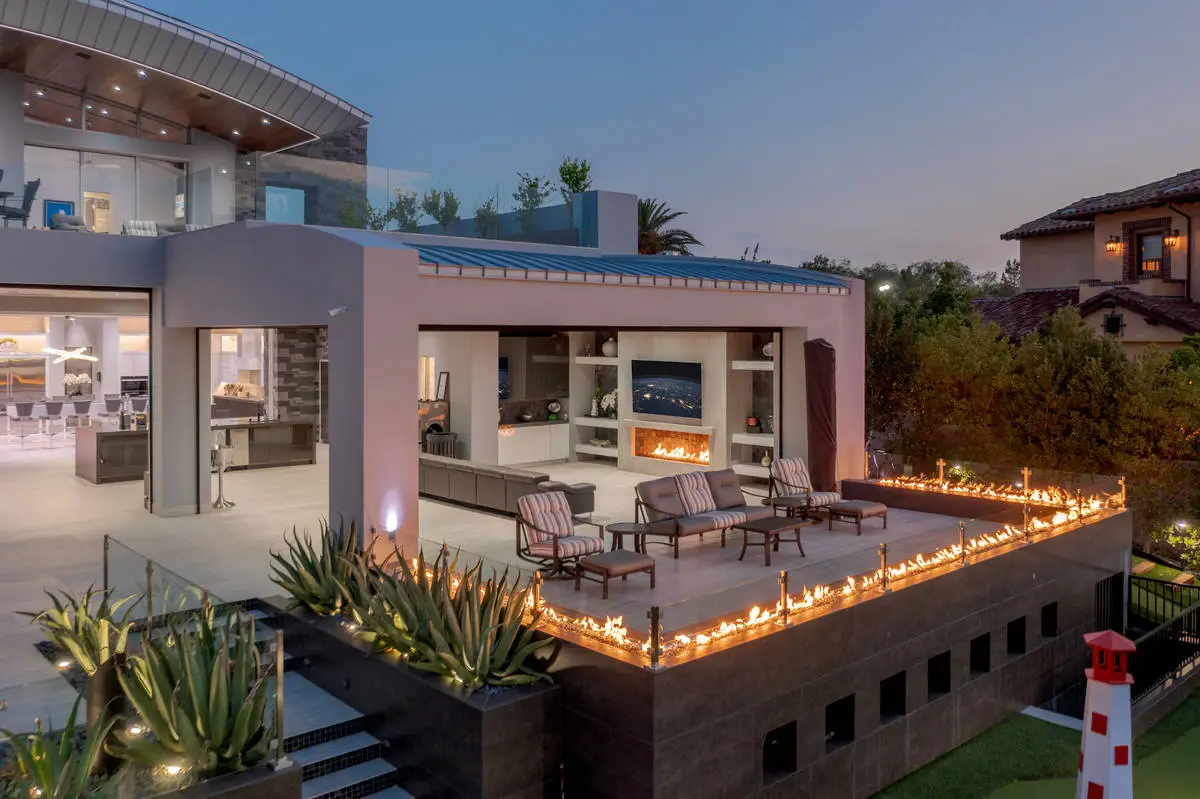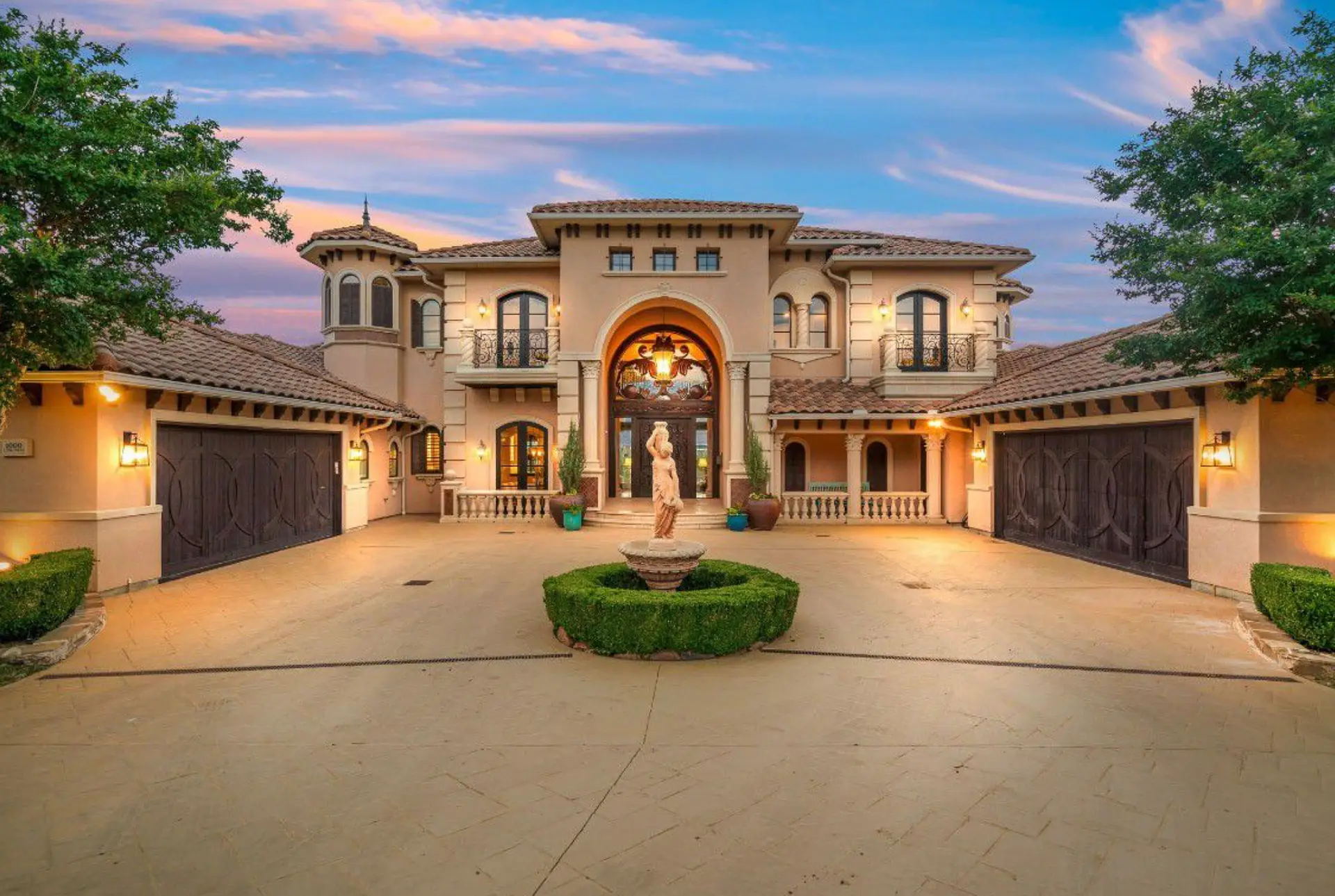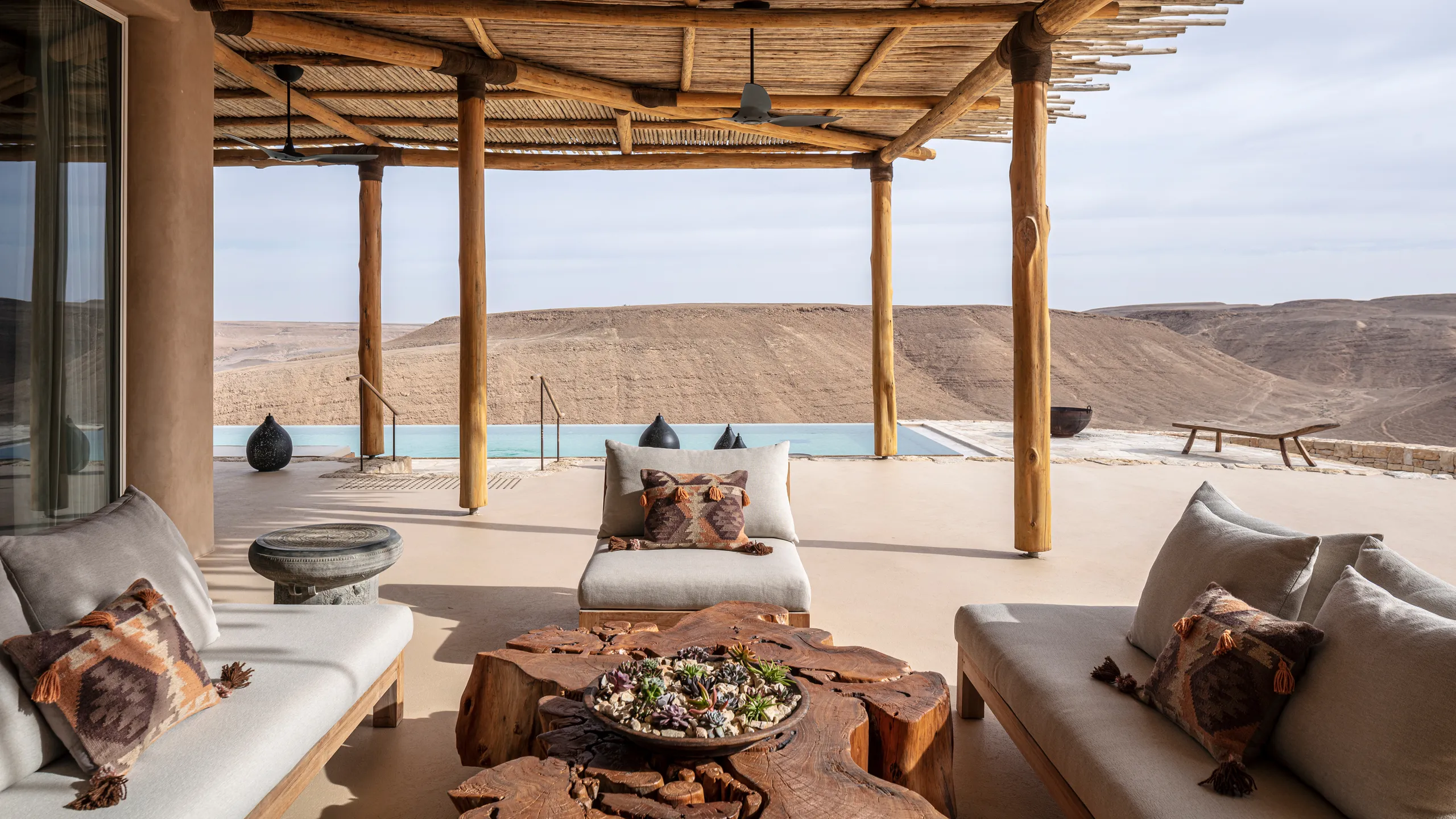Construction, Engineering and Architecture FAQ | Miami, Florida | 2024
- Endless Life Design

- Dec 12, 2023
- 14 min read
Updated: Dec 17, 2023
What Key Priorities do Engineers and Architects consider when constructing Buildings?
Engineers and architects face various concerns when building, aiming to ensure structural integrity, safety, functionality, and aesthetics. Some primary concerns include:
Structural Integrity: Ensuring the stability and durability of buildings and structures to withstand various forces like gravity, wind, seismic activity, and loads.
Safety Compliance: Adhering to building codes, regulations, and safety standards to protect occupants against hazards and ensuring fire safety, accessibility, and health standards.
Functionality and Design: Balancing design aesthetics with practicality, ensuring the functionality of spaces, and meeting the client's requirements while optimizing energy efficiency and sustainability.
Material Selection: Choosing suitable materials that offer durability, efficiency, and sustainability while considering cost-effectiveness and environmental impact.
Budget and Timeline: Managing project costs, timelines, and resources efficiently to meet deadlines and prevent budget overruns.
Environmental Impact: Considering eco-friendly designs, sustainable practices, and minimizing the ecological footprint of construction projects.
Addressing these concerns requires collaboration between architects, engineers, contractors, and other stakeholders to create successful and safe built environments.
What questions do Architects ask?
Architects often ask various questions during the design and planning phases to gather information and understand their clients' needs. These questions can cover a wide range of topics, including:
Client Vision: What are your goals and expectations for this project?
Functional Needs: What specific functions or activities will this space facilitate?
Aesthetics: What style or design preferences do you envision for the project?
Budget: What is your budget range or financial constraints for this project?
Timeline: What is the desired timeframe or deadline for project completion?
Site Considerations: Are there any specific site challenges or environmental factors to consider?
Sustainability: Are you interested in implementing eco-friendly or sustainable design elements?
Regulations: Are there any legal or zoning requirements that need to be addressed?
Maintenance: What level of maintenance are you willing to commit to for the space?
These questions help architects understand the client's needs, preferences, and constraints to create a tailored and successful design solution.
What do Architects and Engineers have in common?
Architects and engineers share several commonalities despite their distinct roles:
Common Technical Knowledge: While their expertise differs, both possess technical knowledge. Architects understand building systems, materials, and construction methods, while engineers delve into structural, mechanical, or electrical systems.
Design Collaboration: Both collaborate closely during the design phase, with architects focusing on aesthetics and spatial design while engineers emphasize structural integrity and functionality.
Problem-Solving: They share a problem-solving approach, seeking innovative solutions to challenges encountered in building design and construction.
Regulations and Codes: Both must adhere to building codes, regulations, and standards, ensuring compliance with safety, accessibility, and environmental requirements.
Team Collaboration: They work in multidisciplinary teams, collaborating with contractors, project managers, and other professionals to execute projects efficiently.
Their collaboration ensures the successful execution of construction projects, combining creative design with technical expertise to create functional and safe built environments.
How much do Architecture Blueprint Plans cost?
Is difficult to provide a final cost without knowing the basic included scope of work list but a good rule of thumbs to start with is Architecture Blueprint Plans are charged in several different ways:
15 - 25% of the entire Construction Project Total Cost.
$3.00 - $12.00 per Square Foot.
Flat Fee (after New Scope of Work List Analysis).
$350.00 - $750 per hour.
Construction entails an inmense almost infinitie list of Construction Services. The cost of architecture blueprint plans can vary significantly based on several factors such as the project size, complexity, location, specific requirements, and the architect's experience or firm rates. Generally, smaller residential projects might have blueprint costs ranging from a few thousand dollars, while larger or more intricate projects, such as commercial buildings or high-end residences, can lead to higher fees, sometimes reaching tens of thousands of dollars, millions or more. It's essential to discuss your project details directly with architects to receive accurate cost estimates tailored to your specific needs and scope of work.
Is there a difference between building and architecture?
No; but it depends how you see it. Building can mean either a skyscraper or that you are constructing something.
The best way to respond this questions is there is a distinction between building and architecture.
Building refers to the physical structure, construction, or edifice created to serve a particular purpose, providing shelter, housing, or space for various activities. It primarily emphasizes the structural, functional, and utilitarian aspects of construction.
Architecture, on the other hand, involves the art and science of designing and planning buildings or structures, focusing not only on the physical form and function but also on aesthetics, spatial experiences, cultural context, and the integration of various elements. Architects consider design principles, creativity, and the visual appeal of buildings while also addressing functionality, sustainability, and the user experience.
How long does it take to do Architecture Plans?
This is one of the most Construction, Engineering and Architecture FAQs. A standard size house can take an architect about 5-7 months to complete the Architecture Blueprint Plans. Though; the duration for completing architecture plans can vary significantly based on several factors:
Project Complexity: Simple residential projects might take a few weeks to a couple of months, while larger, more complex projects, such as commercial buildings or intricate designs, can take several months to a year or more.
Design Development: The time spent on the design phase varies. Initial concepts and schematic designs might take a few weeks, followed by design development, refining details, and finalizing the plans.
Client Collaboration: The timeline can also be affected by client feedback and the number of revisions required to finalize the design to meet the client's vision.
Regulatory Approvals: Obtaining necessary permits and approvals from local authorities can influence the timeline. The process might range from a few weeks to several months, depending on the project's location and complexity.
Architect's Workload: The architect's workload and availability might impact the schedule. Some architects may have multiple projects underway, affecting their capacity to dedicate time to your plans.
Coordination with Engineers and Consultants: Collaboration with engineers, consultants, or specialists for structural, electrical, or plumbing systems can also impact the timeline.
In essence, the time required for architecture plans varies widely and depends on the project's size, complexity, collaboration, approvals, and various other project-specific factors. It's essential to discuss the estimated timeline with your architect based on your project's specific requirements.
How long do Construction Documents take to complete?
The time required to complete construction documents varies based on project size, complexity, team collaboration, and regulatory approvals. Construction documents are comprehensive plans that detail every aspect of the project for construction.
For smaller projects, creating construction documents might take a few weeks (8-12 weeks) to a couple of months (4 - 6 months). However, larger or more complex projects may require several months to develop detailed and precise documents. Factors influencing the timeline include:
Project Complexity: More intricate designs or specialized requirements can extend the time needed to produce detailed construction documents.
Coordination with Consultants: Coordinating with engineers, landscape architects, electrical, mechanical, and other specialists can influence the timeline.
Client Reviews and Revisions: Incorporating client feedback and revisions into the documents affects the overall duration.
Permitting Process: Obtaining permits and regulatory approvals from local authorities may add to the timeline.
Team Collaboration: Effective communication and coordination among architects, designers, and construction teams impact the document's efficiency.
Given these factors, the production of construction documents typically ranges from a few months to even over a year for more complex and large-scale projects. Discussing the timeline with your design and construction team can provide a more accurate estimate tailored to your project's specifics.
ARCHITECTURE IS FOOD
What is Construction Documents?
Construction documents refer to detailed drawings, specifications, and other supporting documentation prepared by architects, engineers, and designers. These documents serve as a comprehensive guide for contractors and construction teams during the building phase. They include:
Architectural Plans: Detailed drawings showing floor plans, elevations, sections, and other views that outline the layout, dimensions, materials, and finishes of the building.
Structural Drawings: Plans and details of the building's structural components, such as beams, columns, foundations, and load-bearing elements, ensuring structural integrity.
Mechanical, Electrical, and Plumbing (MEP) Plans: Detailed drawings illustrating the mechanical, electrical, and plumbing systems of the building, including HVAC, electrical wiring, plumbing layouts, and equipment locations.
Specifications: Written descriptions detailing the materials, finishes, construction methods, and quality standards to be used in the project.
Schedules: Lists or tables providing information on doors, windows, finishes, fixtures, and other components, including quantities, sizes, and specifications.
Details and Notes: Specific instructions, notes, and cross-references that clarify details, standards, and requirements not explicitly shown on the drawings.
These documents are crucial for contractors to accurately bid on the project, understand the scope of work, and execute construction according to the designer's intent. They provide precise instructions and guidelines to ensure that the building is constructed as intended, meeting safety, quality, and regulatory standards.
What is Blueprints Plans? | Construction, Engineering and Architecture FAQ
Blueprints are traditional technical drawings or plans that depict the design, layout, and specifications of a building or structure. They were historically named for the blue background created during the printing process, although modern versions are often white with blue lines or entirely produced digitally.
Blueprint plans typically include:
Architectural Drawings: Detailed floor plans, elevations, sections, and other views illustrating the layout, dimensions, and features of the building.
Structural Plans: Drawings that focus on the structural elements, such as beams, columns, foundations, and load-bearing components.
Mechanical, Electrical, and Plumbing (MEP) Plans: Diagrams and layouts showing the building's mechanical systems, electrical wiring, plumbing, and HVAC (Heating, Ventilation, and Air Conditioning).
Details and Notes: Specific instructions, annotations, and references providing additional information not explicitly shown on the drawings.
Blueprint plans serve as a visual guide for construction, providing precise information to contractors, builders, and construction teams. However, with the advent of digital technology, these plans are now often produced and shared in digital formats, allowing for easier distribution, modification, and collaboration among project stakeholders.
Can I pull my own Permit?
Sometimes you can; but we dont advise you to for many reasons. If you decide to pull your own Permit ther may come a time where which ever Engineer or Architect you are asking questions from will get tired or busy and wills top answering your Permit Questions. First the Government Counties, Municipalities and Cities also in-house many Licensed Civil Engineers and Licensed Architects. When submitting a Government Construction Permit is best to deal from Licensed Civil Engineer to Licensed Civil Engineer additionally to save time.
There are many Government Construction Building Codes and Regulations you dont know about such as Zoning often requires not overpopulating cities example with people want to convert a garage to a bedroom worsen traffic and other City Laws; violating Government Construction Zoning Codes and Regulations will cause the Government to put a lien against your house and stamp a Violation Notice on your property front door until the Violation, Fines and Fees are fully paid and solved not to mention the Government Construction Inspections in your property.
Also there are many Governmental Agencies and Departments the Construction Project usually has to pass through for Permit Approval. Construction Companies do this type of Construction Project on a daily basis and have already established years of relationships with the Government Licensed Civil Engineers, Licensed Architects, Inspectors so forth.
Also some Towns do not allow for you to submit Paper Plans but require Digital Plans and other Cities viceverse. There are so many Government Construction Regulations include even protecting Marine Life prior to building a Slip. We always say let the Construction Professionals do the construction work.
The ability to pull your own permit varies based on local building codes, regulations, and the specific requirements of your municipality or city. In many places, property owners are allowed to obtain permits for certain types of work, especially for minor renovations or repairs on their own property.
However, some jurisdictions may have restrictions or regulations that require a licensed professional, such as a contractor or architect, to obtain permits for certain types of work. Additionally, specific types of projects, like major structural changes or electrical/plumbing modifications, may require professional licensing or certifications to pull permits.
Before attempting to pull your own permi and potentially wasting some of your time, it's crucial to research and understand your local building codes and regulations. You might need to visit your local building department or speak with a building official to clarify the requirements for your specific project. In some cases, it might be safer and more practical to hire a licensed professional who is familiar with the permit process and can ensure that the work meets all necessary standards and codes.
What is a Site Survey?
There are many types of Site Survey and each depends on the project requirements. Here's a list covering some common types of site surveys:
Topographic Survey: Identifies the natural and man-made features of the land, including elevation, contours, trees, water bodies, and infrastructure.
Boundary Survey: Determines the property lines, corners, and boundaries of a parcel of land, often utilized for legal purposes or property delineation.
ALTA/NSPS Land Title Survey: A comprehensive survey meeting the standards set by the American Land Title Association (ALTA) and the National Society of Professional Surveyors (NSPS) providing detailed information for land titles and property transactions.
As-Built Survey: Conducted after construction to document the exact locations, dimensions, and relationships of built features to the original design plans.
Utility Survey: Identifies and maps underground utilities such as gas lines, water mains, electrical conduits, and telecommunications infrastructure.
Environmental Survey: Evaluates environmental conditions, including soil quality, potential contamination, wetlands, or protected habitats on the site.
Geotechnical Survey: Assesses the soil and subsurface conditions to determine stability, bearing capacity, and potential issues for construction projects.
Archaeological Survey: Conducted to identify any historical or archaeological artifacts or sites that may exist on the property.
Traffic Survey: Studies traffic patterns, volume, and behavior in a specific area, often used for road or infrastructure planning.
Building Condition Survey: Assesses the condition of existing structures, identifying defects, damages, and necessary repairs or maintenance.
Each type of survey serves a specific purpose and is conducted by professionals skilled in the relevant field to provide accurate and essential information for construction, development, or legal purposes.
In Construction; do I need a Permit for each thing?
Usually yes. This is to better our lives such as not overpopulating a city in consequence worsen traffic. Though depending on the State, County, Municipality and City plus Construction Regulations some minor repairs, renovations and remodelings do not need Permit such as specifically only replacing old cabinets for new cabinets in any room of the property. A simple thing as a property fence needs Permit; one reason is to avoid discrepancy or fight between neighbors about who owns which land.
Before any construction labor is made you must register your Government Construction Permit. In construction, the need for permits depends on the type and scope of the work being undertaken, as well as local building codes and regulations. Here's a general guideline:
Major Construction or Renovation: Significant projects such as new construction, structural changes, additions, or major renovations typically require permits. This includes work on foundations, roofing, electrical, plumbing, and HVAC systems.
Minor Repairs or Alterations: Smaller-scale projects like minor repairs, painting, flooring, or cosmetic changes may not always require permits. However, it's essential to check local regulations as some jurisdictions might require permits even for minor alterations.
Specialized Work: Projects involving specialized elements such as pools, fences, decks, solar panels, or specific landscaping changes often need permits due to safety, zoning, or aesthetic considerations.
Commercial vs. Residential: Regulations may vary for commercial and residential properties. Certain activities might need permits for one but not the other.
Consult Local Authorities: Always consult with your local building department or permit office to understand the specific requirements for your area. They can provide guidance on what projects require permits and the necessary steps to obtain them.
Professional Advice: For complex projects, consulting with architects, contractors, or engineers is advisable. They can guide you on permit requirements and ensure compliance with building codes and regulations.
It's essential to obtain the required permits before starting any construction work to avoid potential fines, project delays, or the need to redo work that doesn't meet code requirements. Also once you register your Government Construction Permit; you also have to register a Notice of Commencement to officially let Officials know you starter construction labor in your property and after the construction labor in your property is completed you have to register a Notice of Completion to officially let Officials know you completed or ceased the construction labor in your property. In Construction everyhting is very detailed and very specific always using "New Scope of Work List" so everyone is on the same page.
What is the best question to ask an engineer?
We say one of the good questions to ask an engineer is if he can custom design anything. Licensed Civil Engineers are known for being solvers; but are most of them solvers? To be a solver for us is not only to solve is also creativity. Also a very good question to ask an engineer should be a "technical question". Below is a very good list of questions may help you identify the level of expertise of a Licensed Civil Engineer:
What is your favorite Design Style?
Do you aspire to obtain more Construction Licenses?
Do you understand Universal Understanding?
Which one is your favorite Engineering Design Software and why?
Do you do only Civil Engineering and Engineering or you also practice Architecture, Mechanical Engineering - Electrical Engineering - Plumbing Engineering (MEP)?
Do you only design or do you provide all the Construction Services include Site Inspection or Licensed Civil Engineer Letter of Compliance?
Are you a senior engineer or junior engineer?
How long does the Government Construction Permit Comments Phase take to complete?
Each time the Government County, Municipality or City responds to Licensed Civil Engineer, Licensed Engineer or Licensed Architect Licensed Sealed Civil Engineering Architecture MEP Blueprint Plans is called a City Revision and in a more minimized way is also called City Comments.
Some City Revisions/City Comments Completion Time are 3 days, 7 days, 30 days, 8 months and even over 1 year; this is due to: Type of Construction Project, Size of Construction Project, Location of Construction Project, Property Legal Status, Licensed Construction Professionals - Licensed Civil Engineer - Licensed Engineer - Licensed Architect - Licensed General Contractor Construction Knowledge.
Which Architecture Style would go best for a Mansion in Miami, FL? | ELD Architecture Firm | Miami, FL
Ibiza is a great money retirement relaxation atmosphere gives you the Miami Beach Ocean Sea environment feel.
Many Architecture Styles fit into the Luxury Miami Beach Style one of them being that isolated hidden Mediterranean 5 Stories High White Villa surrounded by Tropical Palm Trees and Egypt Dessert Green Plants in a rain of Serenity and Royal Blue Skies. The Perfect Miami Beach Mansion Villa Architecture Style is a Style comes with 24-7 Luxury 007 Protection and Premium White Glove Butler Service.
The Ideal Miami Beach, Florida Mediterranean Moroccan Ibiza Architecture Style Mansion Villa has an internal Travertine SPA for Aromatherapy Body Wraps and Massages, Facials, Sauna, Body Treatment Services, Yoga Studio, Meditation Chinese Outdoor Garden, 3 Cascade Rain Showers; has a Movie Theater; a Disco; Ocean Front; Mega - Yacht Dock; a Tennis Court perhaps in a Private Island; very sunny environment to tan on a Greek Infinity Pool; Classic Pieces of Art on the walls; Classic and Greek Sculptures; Mediterranean Furniture; Interior and Exterior Greek Fountains; Geometrical Rectified Landscape Design; Exotic Animals; a Getaway Retreat Honeymoon; Cabanas through-out the Pool; 5 Guest Houses among many other Amenities.
And there is the Luxury Ultra Modern High End Mega Mansion Villa Architecture. A sophisticated lineal, spacial, clean, easy, expensive, fun, broad, high ceilings, spacious, comfortable, big, flat design. We like Luxury Ultra Modern High End Mega Mansion Villa because is comfortable; white color is often used and gives a huge peace feel; people like fun and you can do fun unexpected geometries shapes with concrete. What better than travel away with no flight back ticket with the love of your life to a place is plan white and blue peaceful where are so many amenities, entertainments and new things to enjoy at you dont want anything else. What is your favorite travel place? What is your favorite Architecture Style?
How long does it take to build a Brand New $40,000,000.00 Mega Mansion Villa?
Fully Custom about 3-5 years. The time required to build a $40,000,000.00 mega mansion villa can vary significantly based on various factors such as:
Size and Complexity: Larger and more intricate designs might take longer to construct.
Permitting and Approvals: The duration for obtaining necessary permits and approvals from local authorities.
Location: Geographic conditions, weather, and terrain can affect construction timelines.
Customization: Uniquely designed features or customization requests may extend the construction period.
Labor and Material Availability: Availability of skilled labor, materials, and supply chain issues.
In general, the construction of a high-end mega mansion villa of this caliber might take several months to a few years, depending on the above factors and the specific requirements of the project. It's not uncommon for such projects to have a construction timeline ranging from 1.5 to 3 years or even longer.
How much does it cost to maintain a Mega Mansion?
The cost of maintaining a mega mansion can vary significantly based on numerous factors, including the mansion's size, location, age, complexity, amenities, and the owner's preferences. Here are some key areas influencing maintenance costs:
Staffing: Salaries for household staff including housekeepers, gardeners, chefs, security personnel, and maintenance workers.
Utilities: Expenses for electricity, water, heating, cooling, and other essential services, often higher due to the mansion's size.
Repairs and Maintenance: Regular upkeep, repairs, and servicing of HVAC systems, elevators, pool maintenance, landscaping, and any specialized features or technology within the mansion.
Insurance and Property Taxes: Costs for insurance coverage, property taxes, and possibly additional security measures.
Renovations and Upgrades: Periodic renovations or updates to maintain the mansion's quality and appeal.
The annual cost of maintaining a mega mansion can easily range from hundreds of thousands to 4 million dollars and up, depending on the aforementioned factors and the owner's standards of upkeep and luxury.
What type of house lasts the longest?
Several factors influence a house's longevity, including construction materials, maintenance, and environmental conditions. Generally, houses made from durable materials like stone, brick, concrete, metal and certain types of wood tend to last longer. Concrete and stone structures can have excellent longevity due to their durability against weathering and pests. Properly maintained houses, regardless of the material, can also extend their lifespan significantly. Ultimately, homes designed and constructed using high-quality materials and maintained regularly can endure for generations.
Give me a list of the most used exotic precious most expensive stones to use as finishes:
Here's a refined list of 40 exotic and expensive stones, including those you mentioned:
Marble: Carrara Marble, Calacatta Marble, Statuario Marble, Lamborghini Marble, Calacatta Gold Marble
Onyx: Black Onyx, White Onyx, Green Onyx, Blue Onyx, Yellow Onyx.
Quartzite: Taj Mahal Quartzite, Super White Quartzite, Macaubas Quartzite, Fusion Quartzite.
Natural Quartz: Rose Quartz, Smoky Quartz, Clear Quartz, Citrine Quartz.
Amethyst: Deep purple quartz gemstone with varying shades.
Tiger Eye: Chatoyant gemstone displaying a golden-brown hue.
Labradorite: Feldspar mineral with iridescent play-of-color.
Malachite: Striking green mineral with unique banding patterns.
Agate: Banded mineral known for its diverse color variations and patterns.
Lapis Lazuli: Deep blue metamorphic rock with golden specks.
Citrine: Golden to yellow-brown quartz gemstone.
Amazonite: Green to bluish-green feldspar mineral.
Selenite: Translucent gypsum mineral often used for decor.
These stones encompass a wide range of colors, patterns, and properties, offering exquisite options for luxurious finishes and design elements are often used implementing Bookmatch Design.






































































































Comentarios